Insulating walls is good.
Insulating ceilings is good.
But when you can do both?
You should high five yourself…
…because your home will be SUPER comfy.
Today you’ll learn how to insulate walls and ceilings the right way.
These tips instantly cut your utility bills and aren’t hard to do.
Let’s dive in.
Today’s Backstory
My buddy Bill put an addition onto his house.
Let’s just say his family is expanding.
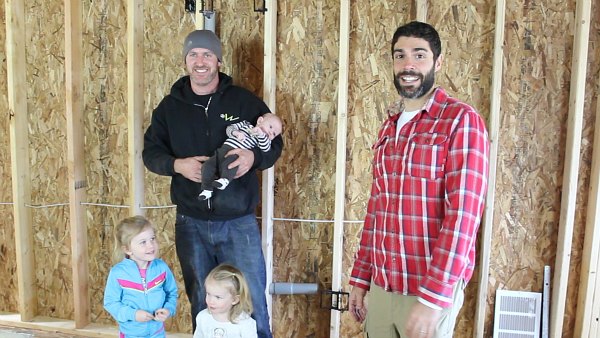
The walls and ceilings in Bill’s addition are open.
This presented us with a great opportunity to show you how to insulate a home.
Here are the supplies you need:
- R-21 for 2 x 6 Walls ($58 per bag)
- R-38 for Ceilings ($58 per bag)
- Gloves ($10)
- Eyewear ($10)
- Utility Knife ($5-$10)
- Insulation Knife (optional)
- Dust Mask ($3-$5)
- Carpenter’s Square ($6)
Adding insulation is pretty easy.
But you can mess it up.
That’s one of the reasons we made this tutorial…to show you the right way.
How to Insulate Walls
What’s your first step?
Measure the distance between studs.
Most homes have 16 inch on-center studs.
You might have 24 inch on-center studs, you gotta check.
Pretty sure my 11-year old daughter could handle this.
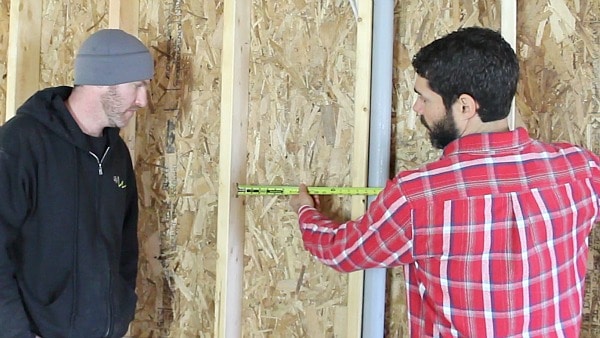
Insulation should fit snug agains the studs to prevent drafts.
We chose Kraft-Faced R-21 for Bill’s walls because it’s the best option for 6″ studs.
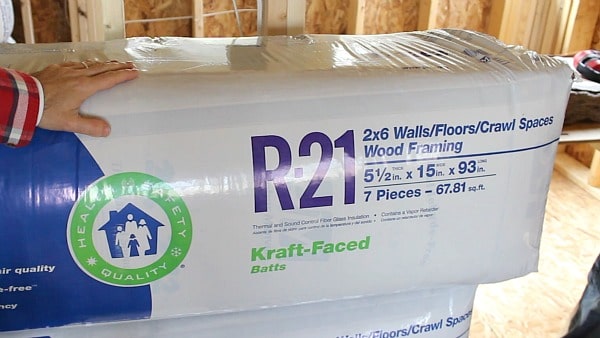
Kraft-Faced insulation also helps prevent mold and mildew.
For cold climates, like Pittsburgh (GO STEELERS), you should have the paper face the interior of the house.
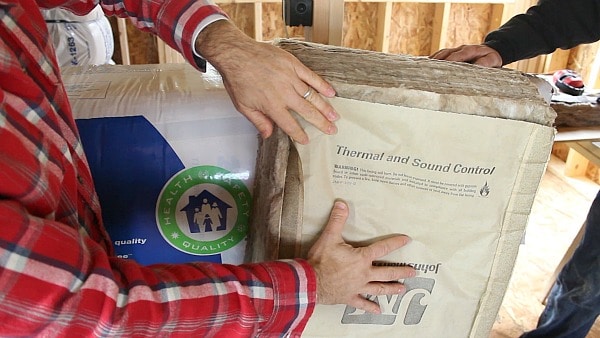
I personally like Johns Manville because it’s formaldehyde-free.
If you value your health this is the way to go.
Does anyone else get grossed out at just saying formaldehyde…reminds me of dead frogs floating in jars.

Measure the width and height of your stud bays.
If you need to trim batts of insulation, do it with a utility knife and carpenter’s square.
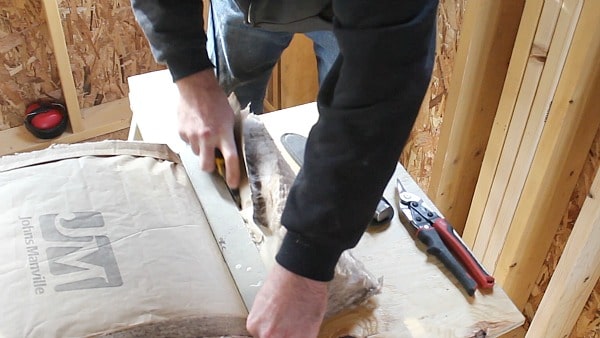
All holes in studs should be sealed with fire-rated caulk.
This goes for wire holes, too.
Hey, this is a great excuse to use the caulking gun!

Insulation should fit snugly at the top and bottom of the stud bay.
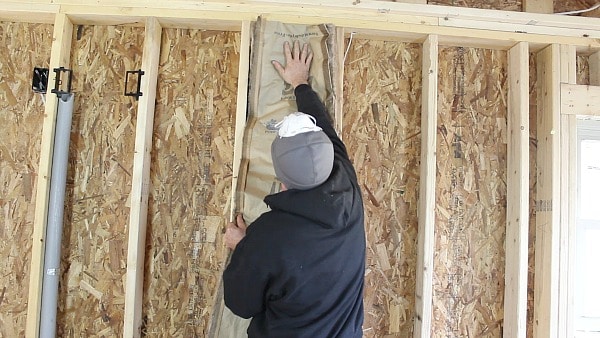
Split insulation and feed it behind and in front of the wires.
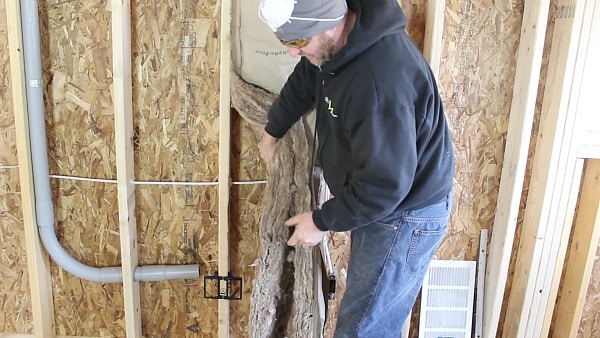
Electrical boxes present a different challenge.
You should cut out a section of insulation for the box.
But make sure the insulation still fits tight against it.
I joked with Bill that he looked like a character from the Walking Dead…
…beards and knives automatically trigger a Rick Grimes reference
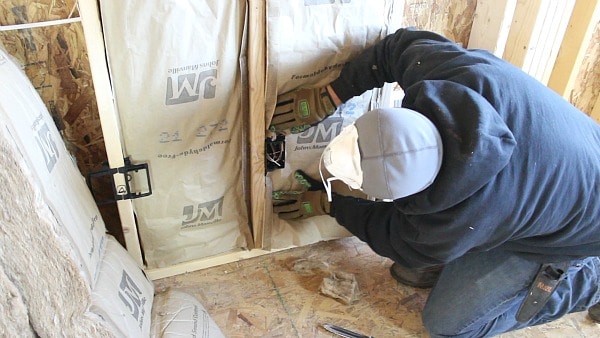
Our insulation’s Kraft paper had tabs on it.
You should staple the tabs every 6-8 inches on the inside of the stud.
This keeps a nice tight seal and prevents the drywall from having bumps.
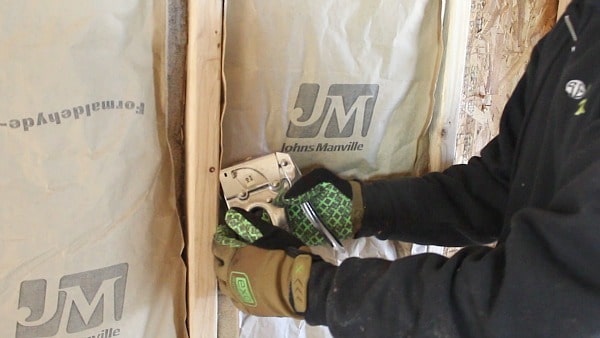
Cut odd size pieces of insulation so that they fit nice and tight.
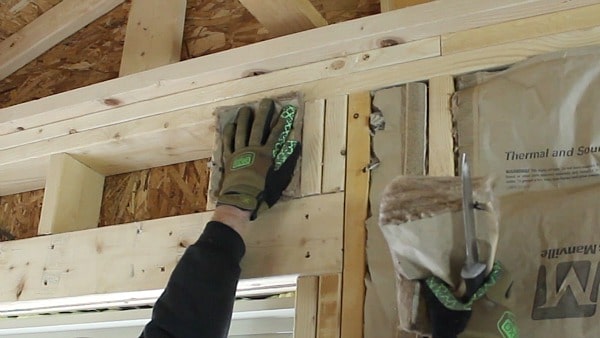
Okay, that pretty much does it for the walls.
We have a few extra tips in the video tutorial, don’t miss that.
So, how should you tackle ceiling insulation?
Ceiling Insulation…Not as Hard as You Think
Bill was a bit nervous to insulate the ceiling.
Until he realized the insulation was cut into 24″ by 48″ batts.
Anyone can install this size of insulation.
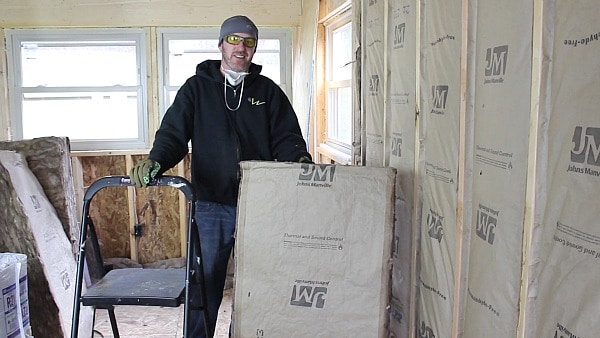
Here’s one of the most important ceiling insulation tips: don’t block air vents.
This stops proper airflow into the attic.
And can lead to problems.
Watch the video to see
- Bill’s cute daughters
- how to insulate
- our COOL SURPRISE at the end
What’s Next
Many thanks to Johns Manville for sponsoring our project.
Good insulation combined with a solid foam backer board like KERDI-BOARD can make for a cozy bathroom, too.
If you’re doing a bathroom remodel and need help, join one of our online courses – they’ll make your bathroom renovation much easier!
Let me know if you have any questions and I’ll do my best to help.
Thanks as always for reading, watching and adding your 2 cents.
Cheers,
Jeff



